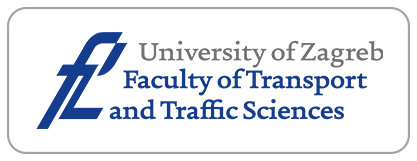Establishing the Correlation Between Complexity and Performance for Arrival Operations
Downloads
Air traffic complexity indicators play an essential role in measuring operational performance and control-ler workload. However, current studies mainly depend on the manual scoring method to scale performance or workload. This paper focuses on arrival operations and presents a data-driven strategy to establish the correla-tion between complexity and performance to avoid the subjectivity of the currently used manual scoring method. Firstly, we present twenty-six indicators for describing air traffic complexity and two indicators for arrival op-erational performance. Secondly, the clustering method distinguishes peak and off-peak situations for arrival operation. Moreover, clustering results are compared to investigate the correlation between complexity and per-formance initially. Thirdly, the classification method is adopted to determine such correlation further. In addi-tion, we also identify the affecting factors which could influence operational performance. Finally, trajectories of arrival aircraft landing at Guangzhou Baiyun Inter-national Airport (ZGGG) are used for case validation. The results indicate that there is a strong correlation be-tween complexity and performance. The accuracy and precision of classification are approximately 90%. Fur-thermore, the number of aircraft significantly impacts the arrival operational performance within TMA.
Downloads
Antulov-Fantulin B, Juričić B, Radišić T, Çetek C. Determining air traffic complexity–challenges and future development. Promet – Traffic&Transportation. 2020;32(4): 475-485. doi: https://doi.org/10.7307/ptt.v32i4.3401.
International Civil Aviation Organization. Manual on global performance of the air navigation system. Report Number: Doc 9883, 2007.
Prandini M, Piroddi L, Puechmorel S, Brázdilová SL. Toward air traffic complexity assessment in new generation air traffic management systems. IEEE Transactions on Intelligent Transportation Systems. 2011;12(3): 809-818. doi: 10.1109/TITS.2011.2113175.
Laudeman IV, Shelden SG, Branstrom R, Brasil CL. Dynamic density: An air traffic management metric. NASA. Report Number: NASA/TM -1998-112226, 1998.
Smith K, Scallen SF, Knecht W, Hancock PA. An index of dynamic density. Human Factors. 1998;40(1): 69-78. doi: https://doi.org/10.1518/001872098779480604.
Masalonis AJ, Callaham MB, Wanke CR. Dynamic density and complexity metrics for realtime traffic flow management. Proceedings of the 5th USA/Europe Air Traffic Management R & D Seminar. 2003. p. 139.
Netjasov F. Terminal airspace traffic complexity. Proceedings of 1st International Conference on Research in Air Transportation ICRAT. 2004.
Netjasov F, Janic M, Tosic V. The future air transport system: Looking for generic metrics of complexity for terminal airspace. Proceedings of the 88th TRB annual meeting; 2009. p. 11-15.
Netjasov F, Janić M, Tošić V. Developing a generic metric of terminal airspace traffic complexity. Transportmetrica. 2011;7(5): 369-394. doi: 10.1080/18128602.2010.505590.
Zhang J, Hu M, Zhang C. Complexity research in air traffic management [空中交通管理中的复杂性研究]. Acta Aeronautica et Astronautica Sinica. 2009;30(11): 2132-2142.
Delahaye D, Puechmorel S. Air traffic complexity: Towards intrinsic metrics. 3rd USA/Europe Air Traffic Management R&D Seminar Napoli. June 2000. p. 1–11.
Delahaye D, et al. Air traffic complexity map based on non-linear dynamical systems. Air Traffic Control Quarterly. 2004;12(4): 367-388. doi: 10.2514/atcq.12.4.367.
Wang Z, Delahaye D, Farges JL, Alam S. Air traffic assignment for intensive urban air mobility operations. Journal of Aerospace Information Systems. 2021;18(11): 860-875. doi: 10.2514/1.I010954.
Wang H, Song Z, Wen R, Zhao Y. Study on evolution characteristics of air traffic situation complexity based on complex network theory. Aerospace Science and Technology. 2016;58: 518-528. doi: 10.1016/j.ast.2016.09.016.
Wee HJ, Lye SW, Pinheiro JP. A spatial, temporal complexity metric for tactical air traffic control. The Journal of Navigation. 2018;71(5): 1040-1054. doi: 10.1017/S0373463318000255.
Chatterji G, Sridhar B. Measures for air traffic controller workload prediction. 1st AIAA, Aircraft, Technology Integration, and Operations Forum. 2001. p. 5242.
Gianazza D, Guittet K. Selection and evaluation of air traffic complexity metrics. 2006 IEEE/AIAA25TH Digital Avionics Systems Conference. 2006. p. 1-12.
Xiao M, Zhang J, Cai K, Cao X. ATCEM: A synthetic model for evaluating air traffic complexity. Journal of Advanced Transportation. 2016;50(3): 315-325. doi: 10.1002/atr.1321.
Zhu X, Cao X, Cai K. Measuring air traffic complexity based on small samples. Chinese Journal of Aeronautics. 2017;30(4): 1493-1505. doi: 10.1016/j.cja.2017.04.018.
Cao X, et al. A knowledge-transfer-based learning framework for airspace operation complexity evaluation. Transportation Research Part C: Emerging Technologies. 2018;95: 61-81. doi: 10.1016/j.trc.2018.07.008.
Radišić T, Novak D, Juričić B. Reduction of air traffic complexity using trajectory-based operations and validation of novel complexity indicators. IEEE Transactions on Intelligent Transportation Systems. 2017;18(11): 3038-3048. doi: 10.1109/TITS.2017.2666087.
Andraši P, Radišić T, Novak D, Juričić B. Subjective air traffic complexity estimation using artificial neural networks. Promet – Traffic&Transportation. 2019;31(4): 377-386. doi: 10.7307/ptt.v31i4.3018.
Xie H, Zhang M, Ge J, Dong X, et al. Learning air traffic as images: A deep convolutional neural network for airspace operation complexity evaluation. Complexity. 2021. doi: 10.1155/2021/6457246.
Standfuss T, Rosenow J. Applicability of current complexity metrics in ATM performance benchmarking and potential benefits of considering weather conditions. 2020 AIAA/IEEE 39th Digital Avionics Systems Conference (DASC). 2020. p. 1-9.
Condé Rocha Murça M, Hansman RJ. Data-Driven modeling of air traffic flows for advanced air traffic management. PhD thesis. Massachusetts Institute of Technology; 2019.
Kopardekar P. Dynamic density: A review of proposed variables. FAA WJHTC internal document, Overall conclusions and recommendations. Federal Aviation Administration; 2000.
Liu S, et al. Identifying operational benefits of the arrival management system–A KPI-based experimental method by evaluating radar trajectories. Promet – Traffic&Transportation. 2021;33(5): 633-645. doi: 10.7307/ptt.v33i5.3786.
Peng Z, et al. Benefits derived from arrival management and wake turbulence re-categorization in China. Transportation Research Record. 2021;2675(11): 373-383. doi: 10.1177/03611981211017898.
Zhang J, et al. Criteria selection and multi-objective optimization of aircraft landing problem. Journal of Air Transport Management. 2020;82: 101734. doi: 10.1016/j.jairtraman.2019.101734.
EUROCONTROL. Unimpeded ASMA Time - Technical Note. 2021. https://ansperformance.eu/methodology/unimpeded-asma-time/.
Jain AK. Data clustering: 50 years beyond K-means. Pattern Recognition Letters. 2010;31(8): 651-666. doi: 10.1016/j.patrec.2009.09.011.
Chang CC, Lin CJ. LIBSVM: A library for support vector machines. ACM Transactions on Intelligent Systems And Technology (TIST) 2011;2(3): 1-27. doi: 10.1145/1961189.1961199.
Menard S. Applied logistic regression analysis. Sage; 2002.
Schonlau M, Zou RY. The random forest algorithm for statistical learning. The Stata Journal. 2020;20(1): 3-29. doi: 10.1177/1536867X20909688.
















